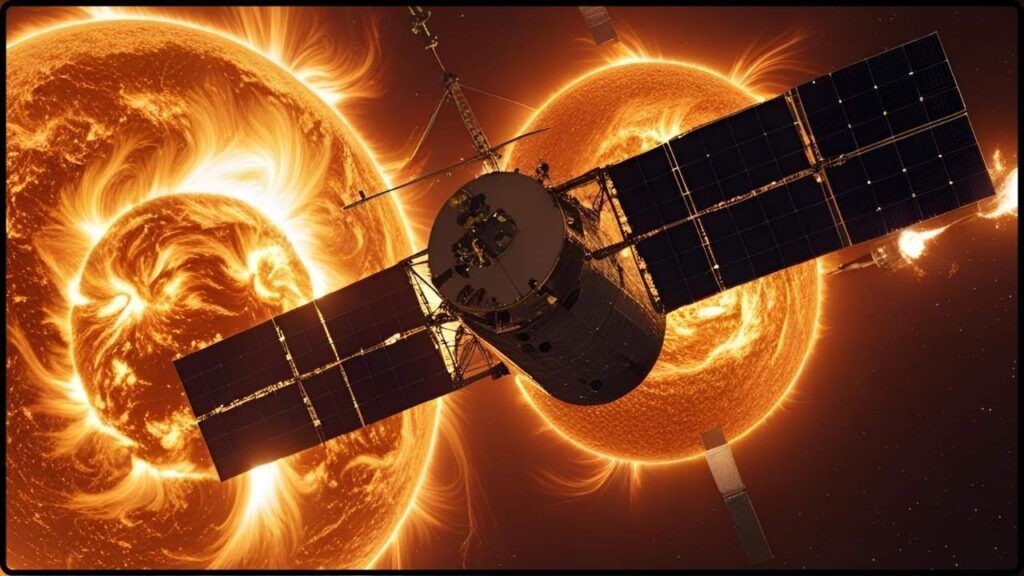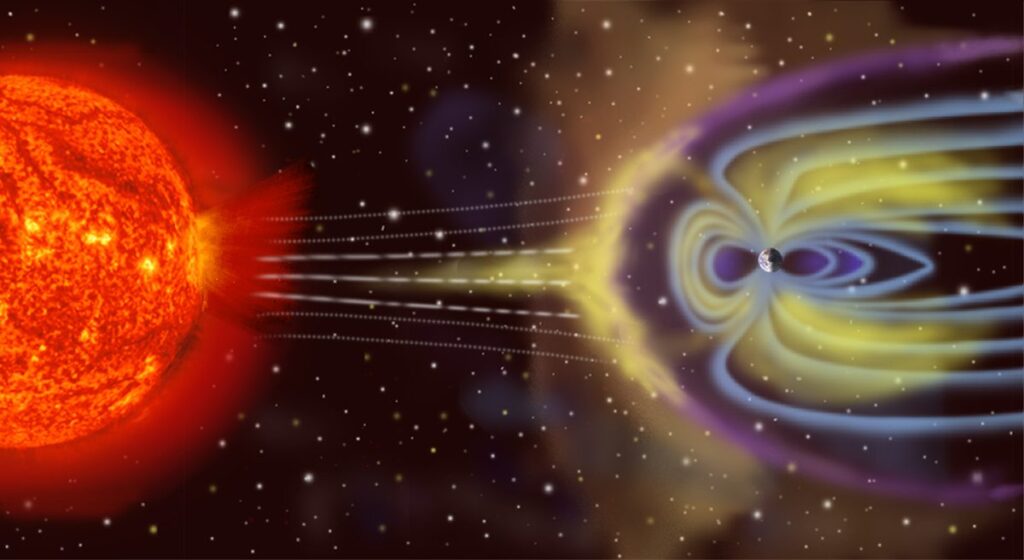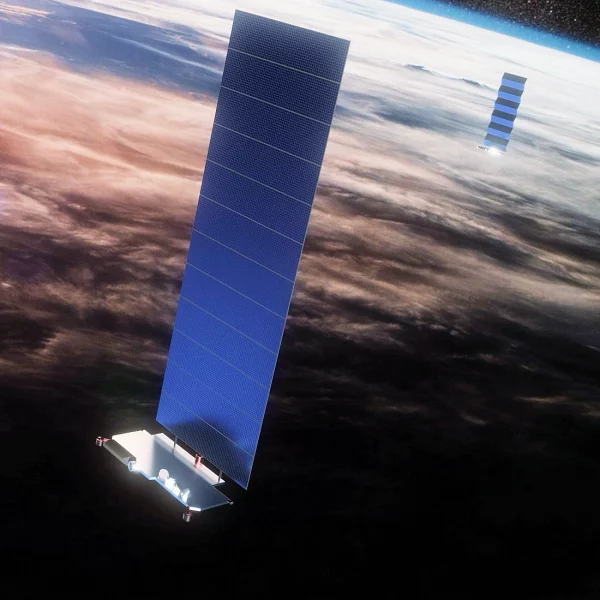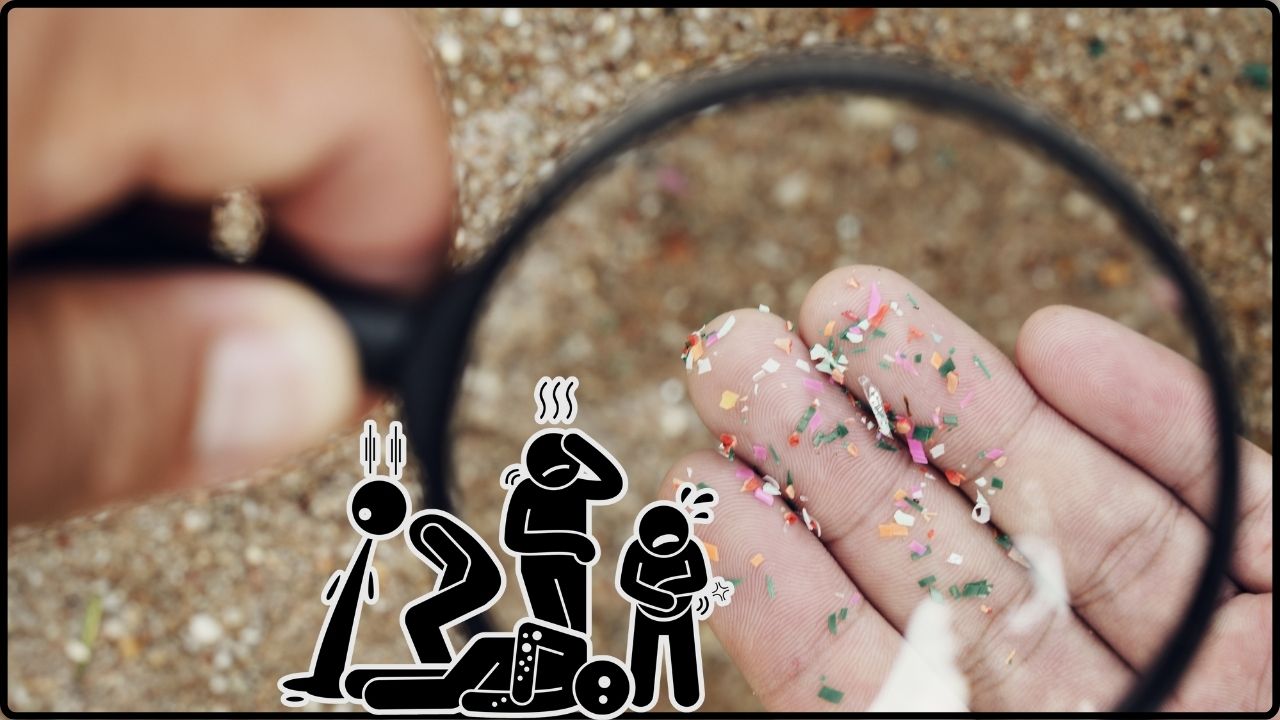Starlink in Trouble: If you’ve been following Elon Musk’s Starlink or space news in general, there’s a buzz you can’t ignore: solar storms are beginning to seriously mess with satellite systems—especially those operated by Starlink. These solar events, tied to the current solar cycle’s peak activity, are now disrupting thousands of low-Earth orbit satellites, threatening connectivity and highlighting major vulnerabilities in modern space-based technology. In this article, we’ll break down exactly what’s happening, why it matters, and what professionals, educators, and everyday users should know moving forward.
Starlink in Trouble
The current surge in solar activity is not just a beautiful aurora generator—it’s a serious operational threat to systems like Starlink. As geomagnetic storms intensify through the 2025 solar maximum, Starlink satellites and other low-Earth orbit constellations will face higher-than-normal decay rates, communication challenges, and increased risk of collision or loss. SpaceX is innovating quickly to manage these threats, but it’s a reminder that Earth’s near-space environment is both dynamic and dangerous. The future of satellite internet depends not just on rockets and routers, but on forecasting solar storms, smart design, and global collaboration.

| Topic | Details |
|---|---|
| Issue | Solar activity disrupting Starlink satellite operations. |
| Cause | Solar maximum phase, leading to stronger geomagnetic storms. |
| Effect | Atmospheric drag causes satellites to re-enter Earth’s atmosphere prematurely. |
| Confirmed by | NASA, NOAA, ESA space weather reports. |
| Satellite Impact | Over 7,800 Starlink satellites exposed to elevated decay risks. |
| Risk Level | Moderate to high through 2025–2026 solar cycle peak. |
| Professional Impact | Job growth in aerospace engineering, orbital forecasting, and space policy. |
| Source for Users | Visit Starlink.com |
What is a Solar Storm and Why is it a Problem?
A solar storm is caused by a burst of energy from the Sun—typically from phenomena like solar flares or coronal mass ejections (CMEs). When these bursts reach Earth, they interact with our planet’s magnetic field and atmosphere, causing geomagnetic storms.
While they might result in beautiful auroras near the poles, these storms also cause Earth’s upper atmosphere to expand. The result? Satellites in low-Earth orbit encounter more atmospheric particles—creating resistance, or drag, that slows them down and pulls them closer to Earth.
Starlink satellites orbit at about 550 kilometers above Earth, right where the effects of increased atmospheric drag are most severe.

Historical Solar Events that Shaped This Concern
Solar storms are nothing new. They’ve disrupted technology for over a century:
- The Carrington Event (1859): The most powerful solar storm in recorded history. It disrupted telegraph lines and lit up skies with auroras as far south as Cuba.
- March 1989 Quebec Blackout: A geomagnetic storm knocked out electricity for over 6 million people in Canada.
- February 2022 Starlink Loss: SpaceX lost 40 newly launched satellites due to an unexpected geomagnetic storm that increased drag dramatically.
These historical patterns reinforce the reality: solar storms can and do damage real-world infrastructure, and today, that includes satellite constellations.
How Are Solar Storms Impacting Starlink?
Starlink is a constellation of satellites launched by SpaceX to provide high-speed internet across the globe, especially in rural and remote areas. The service depends on thousands of low-Earth orbit satellites (LEO), which makes it faster than traditional satellite internet—but also more vulnerable to space weather.
Here’s what’s happening now:
- Increased atmospheric drag from solar storms is pulling satellites out of orbit faster than expected.
- Satellites that were supposed to last five to seven years may now be re-entering Earth’s atmosphere in three to four.
- The frequency of geomagnetic storms is expected to peak in late 2025, further intensifying the risks.
According to NASA and European Space Agency (ESA) data, satellite orbital decay rates have increased by 50% or more during periods of intense solar activity.

Data and Real-World Examples
Let’s look at the numbers:
- Total Starlink satellites launched: Over 7,800
- Expected satellite loss due to space weather through 2025: 100–200+
- Cost per Starlink satellite: Between $250,000 to $500,000
- Decay acceleration rate during solar storms: 2x to 4x faster than during solar minimums
In 2024 alone, NASA observed nearly two dozen premature re-entries among satellites from Starlink, OneWeb, and CubeSat operators—all caused by increased drag from unexpected solar activity.
A 2024 study from ESA showed that the thermosphere (the upper layer of the atmosphere) expanded by nearly 45 kilometers during peak solar flare events. That’s enough to dramatically change the resistance satellites experience—even a 1% increase in atmospheric density at that altitude significantly boosts drag.
What Is SpaceX Doing As Starlink In Trouble?
SpaceX is already adjusting operations in several key ways:
Orbit Adjustments
- Starlink satellites can maneuver into a “low-drag” orientation, where they present their edge instead of their broad side to the atmosphere, reducing friction.
- For higher-priority satellites, SpaceX raises orbits temporarily to escape the most affected atmospheric bands.
AI-Based Prediction Models
- SpaceX uses AI-driven software to monitor solar weather and anticipate drag events.
- Satellites are equipped with autonomous navigation systems that can respond to changes in atmospheric density.
Hardware Improvements
- Newer satellites, including the Starlink V2 Mini units launched in 2023–2024, include stronger propulsion systems and drag-resistant designs.
- SpaceX is testing laser links and radiation-hardened electronics to improve resilience.
Despite these efforts, the unpredictability and severity of solar storms still leave gaps that technology alone can’t close—yet.

Practical Advice for Users and Stakeholders
For Starlink Users
If you rely on Starlink, especially in rural areas, here’s what you should consider:
- Check service notifications in the Starlink app regularly.
- Consider having a backup internet source (like 4G or 5G) in case of short outages.
- Install your satellite dish in a location where it has unobstructed sky view, which helps maintain service even when satellites shift slightly.
For Educators and Parents
This is a great time to incorporate space weather into your science curriculum:
- Simulate orbital decay using ball bearings and friction tracks.
- Show time-lapse data from real solar flare monitoring tools like SpaceWeatherLive.com.
For Professionals and Job Seekers
The current solar cycle is creating demand in several sectors:
- Aerospace Engineering: More robust satellite designs and propulsion systems are in demand.
- Space Policy and Law: Increased orbital congestion raises the need for international agreements.
- Data Science & AI: Predictive modeling for orbital decay and drag forecasting.
- Meteorology & Astrophysics: Careers in solar weather forecasting are growing.
What This Means for the Future of Satellite Constellations
The Starlink challenges of 2024–2025 are a turning point. They’re a real-world demonstration that space isn’t as calm and predictable as we might think. Just as weather affects aviation, space weather is becoming a critical variable in satellite management.
More importantly, it brings to light broader concerns:
- Satellite congestion: With thousands of satellites in LEO, even minor orbital shifts increase the risk of collisions.
- Space debris: Premature re-entries, even if controlled, can lead to debris falling on land. In 2024, debris from a Starlink satellite was found on a Canadian farm.
- Infrastructure vulnerability: Power grids, navigation systems, and internet infrastructure are all affected by solar storms.
Global organizations like the United Nations Office for Outer Space Affairs (UNOOSA) and International Telecommunication Union (ITU) are now pushing for better satellite coordination and debris mitigation standards.
Not Gold, Not Copper—Egyptians Used Iron From Space in Sacred Objects, New Study Reveals
Goodbye to Space-Time Limits: This Black Hole Is Spinning Faster Than Anyone Thought Possible
Not Gold, Not Platinum—This Man’s Mysterious Rock Was Worth More Than Both and Came from Space











